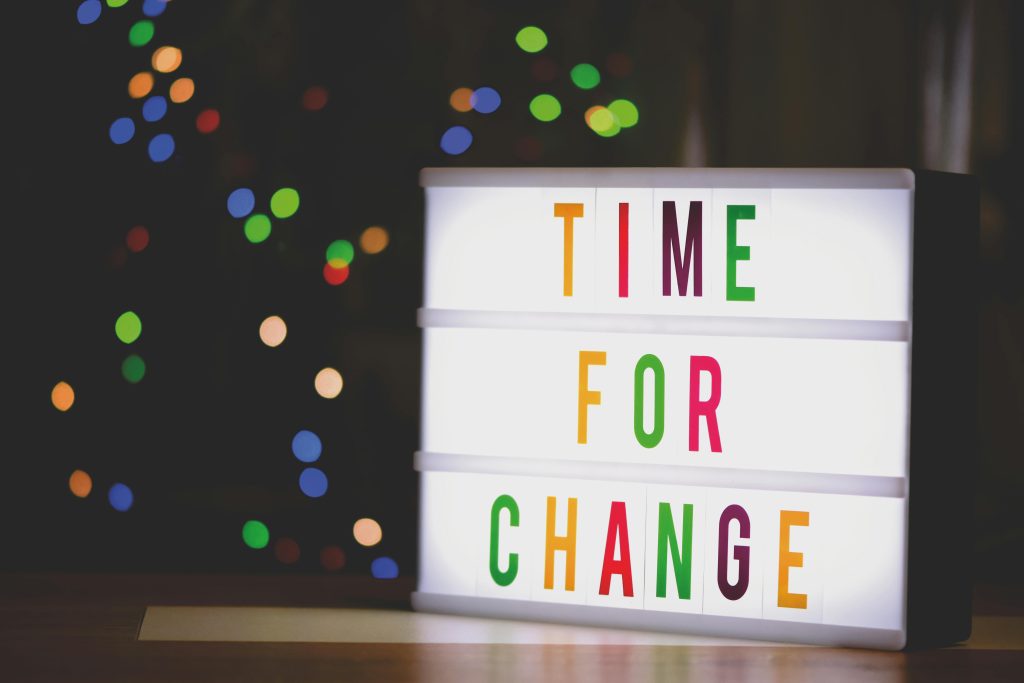The First Step to Changing Bad Habits is to Be on the Lookout for Them
Habits shape our daily lives more than we realize. From the moment we wake up to the time we go to bed, our actions are often driven by patterns we’ve developed over time. Some habits serve us well – like brushing our teeth or exercising regularly – but others can hold us back, affecting our health, relationships, and personal growth.
The challenge with bad habits is that they often operate on autopilot. We might reach for unhealthy snacks when we’re stressed, scroll through our phones endlessly, or skip workouts without even realizing how frequently it happens. That’s why the first and most crucial step to changing these behaviors is awareness. You can’t fix a problem you don’t see.
In this blog post, we’ll explore how to identify bad habits, why awareness is key to transformation, and practical steps you can take to create lasting, positive change.

Why Awareness is the Foundation of Habit Change
Think about this: How many times have you vowed to break a bad habit, only to find yourself slipping back into old patterns? It’s frustrating, but there’s a reason for it. Most habits are unconscious responses to triggers in our environment. Without recognizing these triggers, any attempt to change the habit becomes like shooting in the dark.
Awareness brings clarity. It shines a light on the hidden patterns that drive our behaviors. Once you’re aware of what you’re doing and why, you can interrupt the cycle and choose a different path.
For example:
- If you notice that you reach for sugary snacks every time you feel bored, you can begin to substitute that habit with something healthier – like drinking water or taking a short walk.
- If you realize you procrastinate whenever you face a difficult task, you can develop strategies to tackle those tasks in smaller, more manageable steps.
But before any of this can happen, you need to catch yourself in the act.

How to Spot Bad Habits: Practical Strategies
Identifying bad habits isn’t always straightforward. Here’s how you can develop the skill of self-awareness to detect the patterns holding you back:
1. Keep a Habit Journal
Writing things down creates a powerful record of your daily actions. For one week, log your activities, thoughts, and emotions. Pay attention to patterns that emerge.
- What time of day do you typically feel the most distracted?
- When do you crave unhealthy foods?
- How do you react when you feel stressed or anxious?
Sometimes, seeing your habits written down helps highlight trends you hadn’t noticed before.
Example: You may realize that you binge-watch TV every evening, preventing you from getting enough sleep. A habit journal helps you connect the dots.
2. Pay Attention to Emotional Triggers
Bad habits are often linked to our emotions. Stress, boredom, loneliness, or frustration can lead us to engage in behaviors that provide temporary relief but long-term harm.
The next time you catch yourself indulging in a bad habit, stop and ask:
- How am I feeling right now?
- What triggered this action?
- Is there another way to handle this feeling?
By acknowledging emotional triggers, you can learn to respond in healthier ways.

3. Enlist Outside Feedback
Sometimes, others notice our bad habits before we do. Ask close friends, family, or colleagues for honest feedback. They may point out habits you’ve overlooked.
Example: A friend might mention that you constantly complain about work, reinforcing a cycle of negativity you hadn’t recognized.
4. Look for Repeating Patterns
Pay attention to recurring outcomes in your life. If you consistently find yourself in certain situations (e.g., always running late, feeling exhausted, or failing to meet goals), there’s likely a habit driving those results.
Example: If you frequently overspend, review your spending habits. Do you shop impulsively when you’re bored or stressed?

Common Bad Habits to Watch Out For
While everyone’s patterns are different, some bad habits are particularly widespread. Here are a few to keep on your radar:
- Procrastination – Delaying tasks until the last minute.
- Overeating or Emotional Eating – Using food to cope with emotions.
- Lack of Exercise – Neglecting physical activity due to busyness or fatigue.
- Negative Self-Talk – Engaging in critical inner dialogue.
- Screen Overload – Spending excessive time on phones, TV, or social media.
- Skipping Meals – Leading to poor eating patterns later in the day.
- Impulse Spending – Making purchases without consideration.
Awareness of these habits is the first step to gaining control over them.

The Science of Habit Formation
To fully understand how to change bad habits, it helps to know how habits are formed. According to Charles Duhigg, author of The Power of Habit, every habit follows a loop:
- Cue (Trigger): A signal that prompts the behavior.
- Routine: The behavior itself.
- Reward: The benefit you gain from the behavior.
For example:
- Cue: You feel stressed.
- Routine: You eat a cookie.
- Reward: The cookie provides comfort and a break from stress.
The goal is not to eliminate the cue or reward but to change the routine. Instead of eating a cookie, you could meditate, drink tea, or take deep breaths.

Breaking the Cycle: How to Replace Bad Habits
Once you’ve identified a bad habit, the next step is to replace it with a healthier alternative. Here’s how:
1. Choose a Substitute Behavior
For each bad habit, identify a positive action you can do instead.
- Instead of reaching for sweets when bored, try reading or stretching.
- Instead of scrolling on your phone, engage in a hobby you enjoy.
The substitute should provide similar rewards to the old habit.
2. Minimize Triggers
Reduce exposure to the cues that trigger your bad habits.
- If you snack late at night, don’t keep junk food in the house.
- If social media distracts you, turn off notifications during work hours.
Out of sight, out of mind.
3. Create an Accountability System
Tell someone about your goal to break a habit. Knowing someone is watching can motivate you to stay on track.
4. Be Patient and Persistent
Habit change doesn’t happen overnight. Slip-ups are normal. The key is to return to the process and keep going.

Tracking Progress and Celebrating Small Wins
To stay motivated, track your progress. Use a habit tracker, calendar, or app to mark days you successfully replace bad habits with better ones.
Celebrate milestones. Reward yourself for sticking to your plan for a week, a month, or longer. Positive reinforcement helps solidify new routines.

Final Thoughts: Awareness is Empowerment
The simple act of noticing your habits creates the foundation for lasting change. By paying attention to your daily routines and emotional triggers, you open the door to transforming your life – one small habit at a time.
Change starts with awareness. By being on the lookout for the patterns that no longer serve you, you empower yourself to build healthier, more fulfilling habits that align with the person you want to become.


